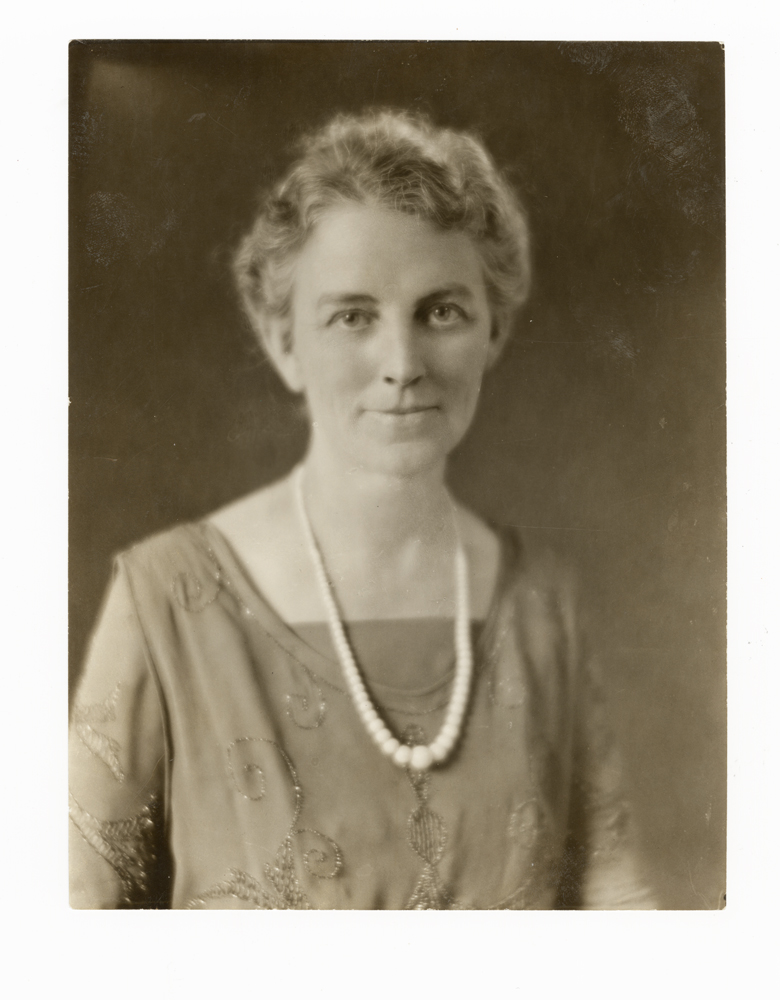
The women memorialized by the Bench on the Midway were a team in the cause of women’s suffrage—in the belief that women would vote for creating a better society. Cheney, who had health issues, was the campaign manager, Goode was the public speaker and organizer.
Goode’s full name was Ida Katherine Hancock Goode. She was born in 1878 in Minnesota, became a teacher at the 14, and found a teaching job in Philadelphia, where she married J. Paul Goode in 1901. She moved to Chicago—6227 S. Kimbark--in 1903 when her husband joined the Geography Department of the University. There’s a time in the middle of her activities when they lived in China.
She became a leader of the Woodlawn Woman’s Club and Political Equality League, branches of the city-wide organizations. The Political Equality League was the organizing wing of the Woman’s Club, organizing marches and petitions, teaching classes on political, legal, and economic issues, debating women’s role, supporting striking women workers, and promoting the welfare of children (meaning sanitation, housing issues, schools, etc.).
Women had been fighting for the vote in Illinois since 1855. Illinois granted women the right to vote for school boards in 1891. The women’s clubs organized in every Illinois senatorial district and managed to get the suffrage bill passed in Illinois in 1913. Goode was a frequent speaker at these women’s clubs and even traveled to other states as the invited speaker. In December 21, 1926, Katherine Goode gave the Convocation Address to the University of Chicago on “Woman’s Stake in Government”
She wasn’t the first woman in the legislature. The first woman elected to the Illinois Senate was Florence Fifer Bohrer. First woman in the Illinois House was Lottie Holman O’Neill in 1921. Goode was elected to the Illinois House in 1925. Apparently, each senate district then had two representatives to the Assembly. As near as I can tell the whole district voted for both representatives. I believe her district, the 5th, ran from 43rd to 71st, the lake to State.
Serving in the legislature in the 1920s wasn’t exactly a high-minded joy. There’s an account in the Tribune of a session she spoke at. It’s the closing of the year, so the Assembly is trying to push through lots of last-minute votes. “While these precious closing hours are rushing by amid sweat and tobacco smoke and slithering and bluff and bellow and browbeating and fawning and bombast and some booze, hundreds of millions are being legislated away.” But then “Amid the heartsickening hullabaloo, there are some contrasts. A woman rises from her desk—Representative Katherine Hancock Goode….The hour is late, the heat cruel and Mrs. Goode must be weary, but she meets an emergency gallantly. The member who was to have spoken on the bill that would permit the removal of the Cook County jail from the heart of Chicago is found to be—and here I speak literally—'in no condition to speak.’ Mrs. Goode must speak for him. She does, and she speaks well. Her tone is clear and far carrying but not loud. There is not, as there is about most women when they speak in public, any simper of self-consciousness about her. She knows what she is talking about and so is brief. Her words are well chosen, she is applauded.”
She ran unopposed in her re-election. The Tribune said of her campaign that “she showed that she possessed unusual capacity for legislative work.” But two months after the election, she died suddenly of influenza, to an outpouring of grief.
University of Chicago Photographic Archive, [apf1-06411], Special Collections Research Center, University of Chicago Library.
No comments:
Post a Comment